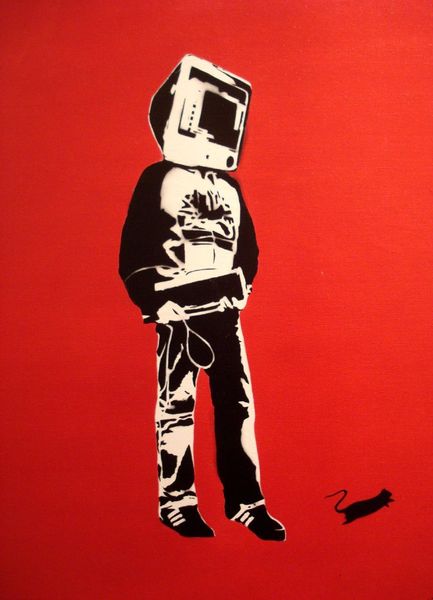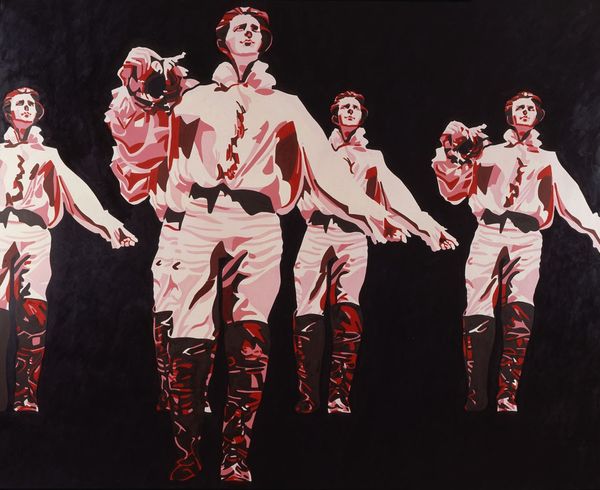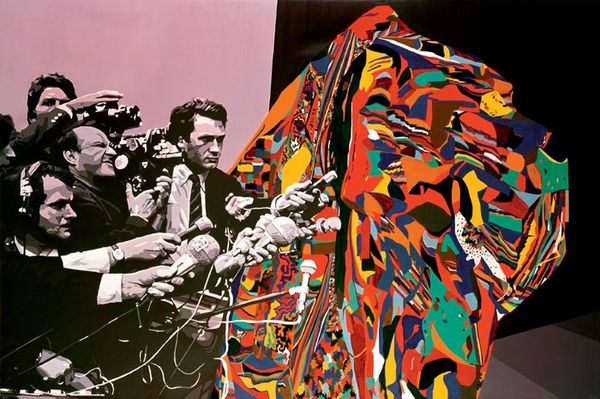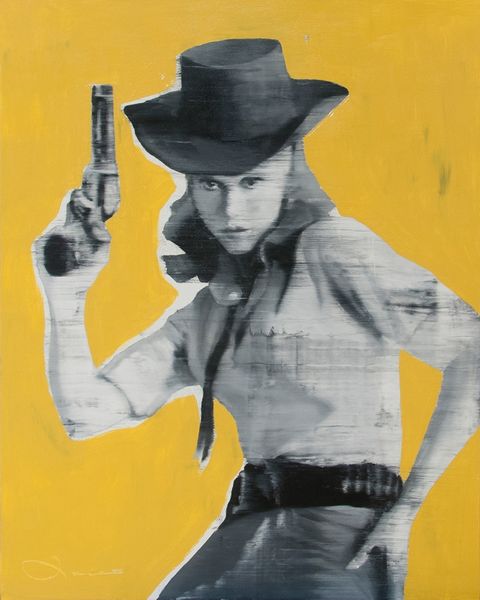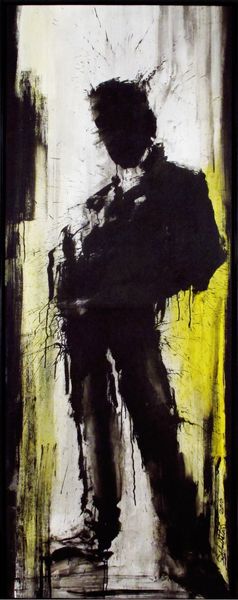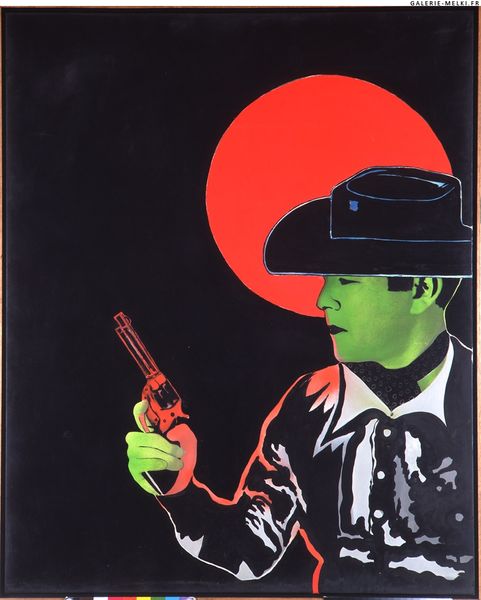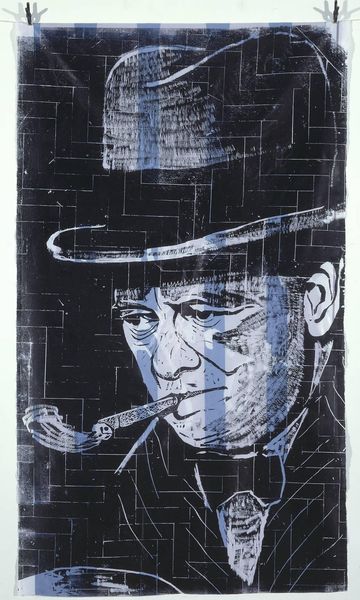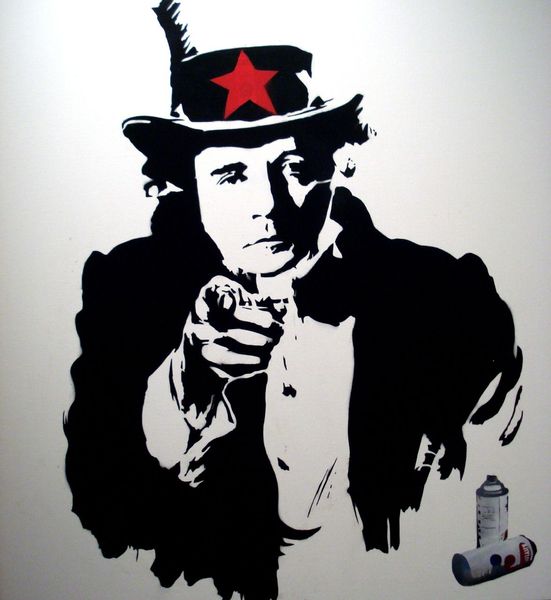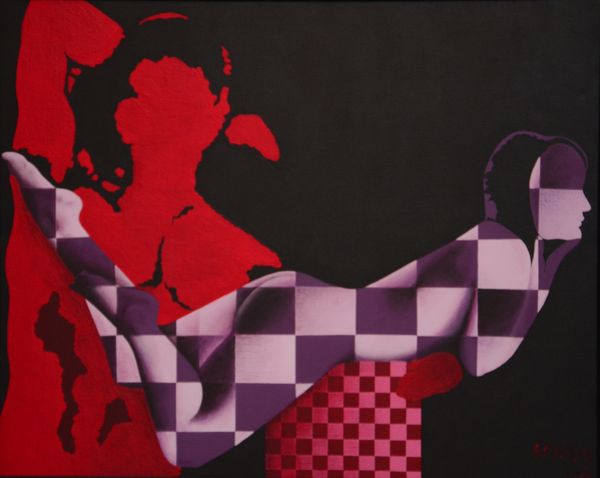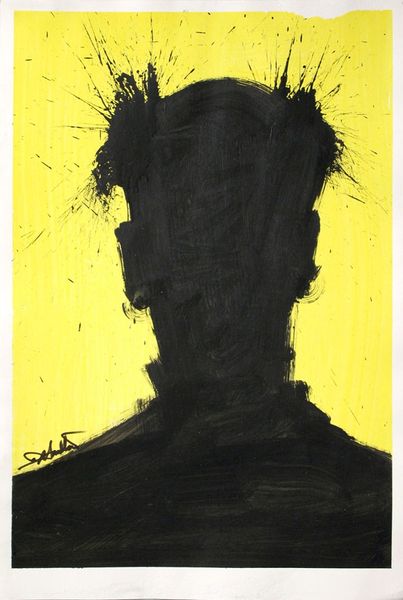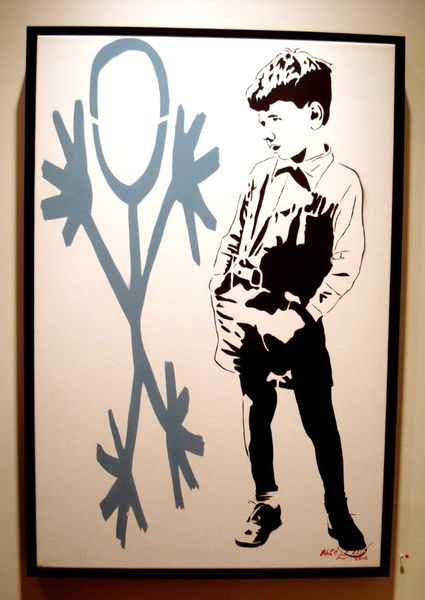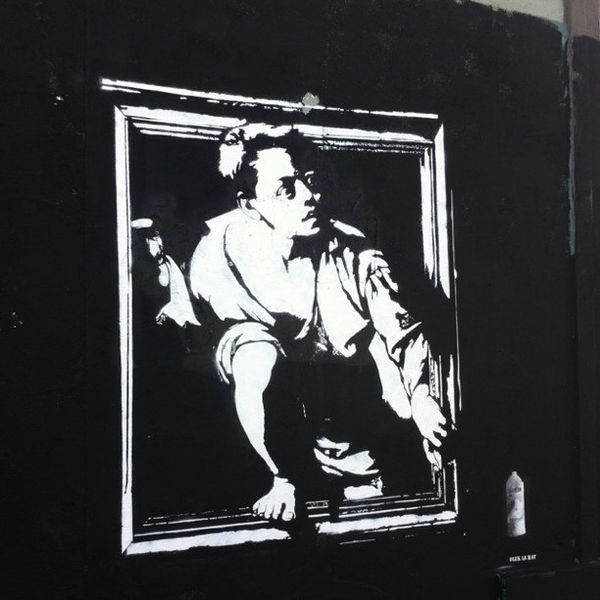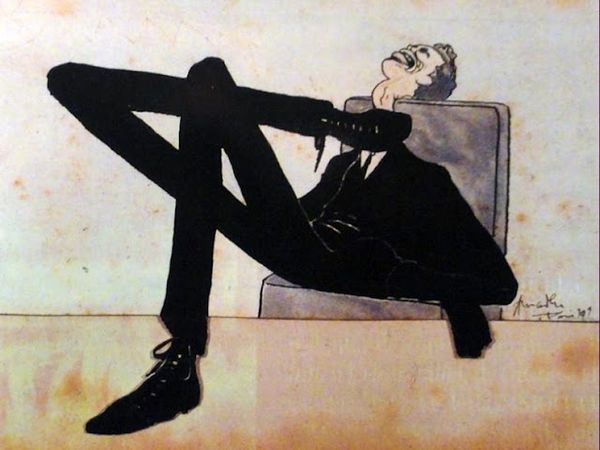
stencil
#
portrait
#
street-art
#
caricature
#
pop art
#
stencil
#
neo expressionist
#
pop-art
#
portrait art
Copyright: Blek le Rat,Fair Use
Editor: Here we have "Violinist" by Blek le Rat, created using a stencil. I find the sharp contrasts of the stencil technique, with the solid blacks and whites, strangely compelling against the background. How do you read this piece? Curator: This piece really highlights how street art reclaims public space using methods challenging the established art world's norms of production. Considering Blek le Rat’s stencil technique, the reproduction aspect is critical. Do you think this ease of reproducibility and distribution alters the work’s value? Editor: I guess so. It democratizes the art, making it less about a precious object and more about the image's impact and distribution in public view. What statement might that accessibility be trying to make? Curator: Exactly. Think about it in terms of labor and consumption: this stencil allows the artist to quickly create and disseminate numerous images, almost like a mass-produced item. The value shifts from the artist's hand skills, like in traditional painting, to the design and concept behind the image, its message. Editor: So, you're saying the medium itself is part of the message – commenting on production and accessibility, not just representing a violinist? Curator: Precisely! The choice of a stencil as a means of production places the "Violinist" within a discourse on commodification and street culture. Consider also the ephemerality usually associated with street art. Editor: That makes me look at the piece completely differently. The focus on material and mode of creation really adds depth. I hadn't considered the "why" of the medium itself. Curator: It's about seeing art as enmeshed within a broader social and economic network, from its creation to how it's encountered in the world.
Comments
No comments
Be the first to comment and join the conversation on the ultimate creative platform.
